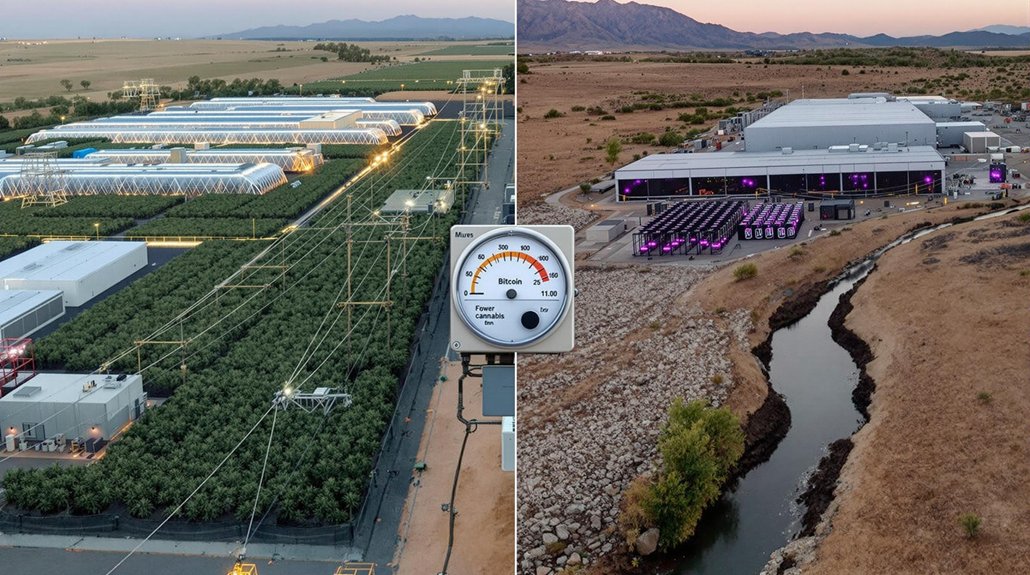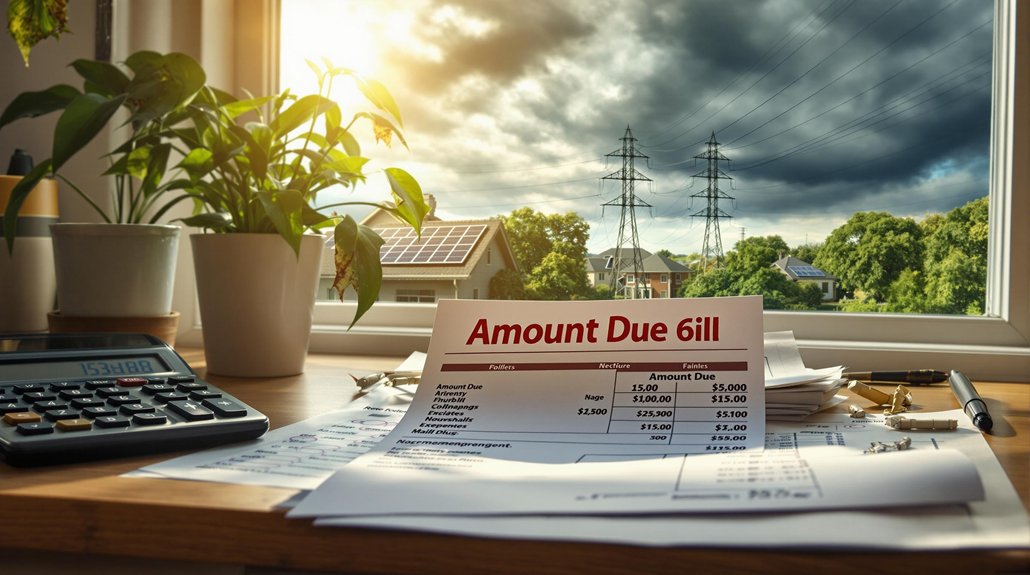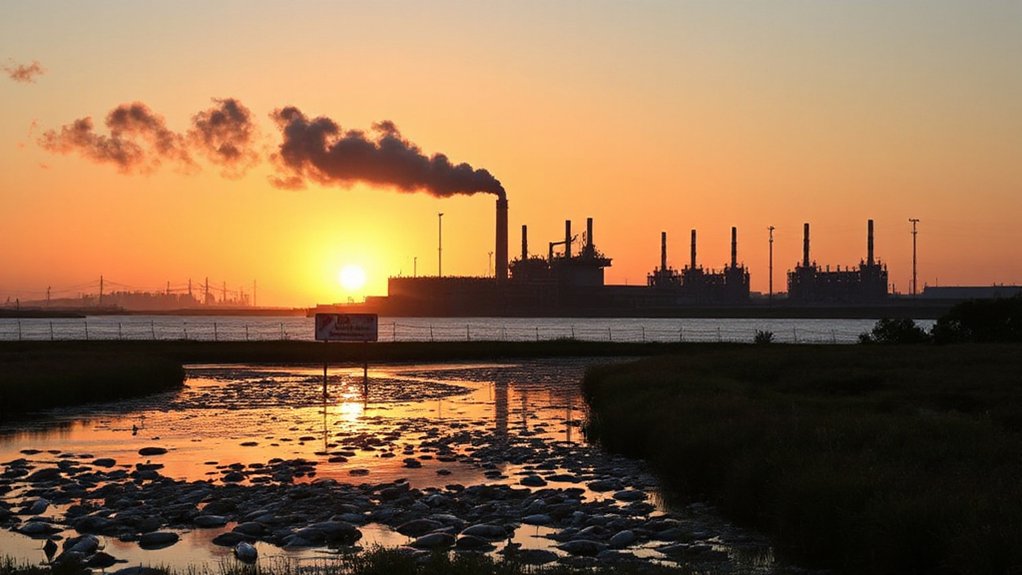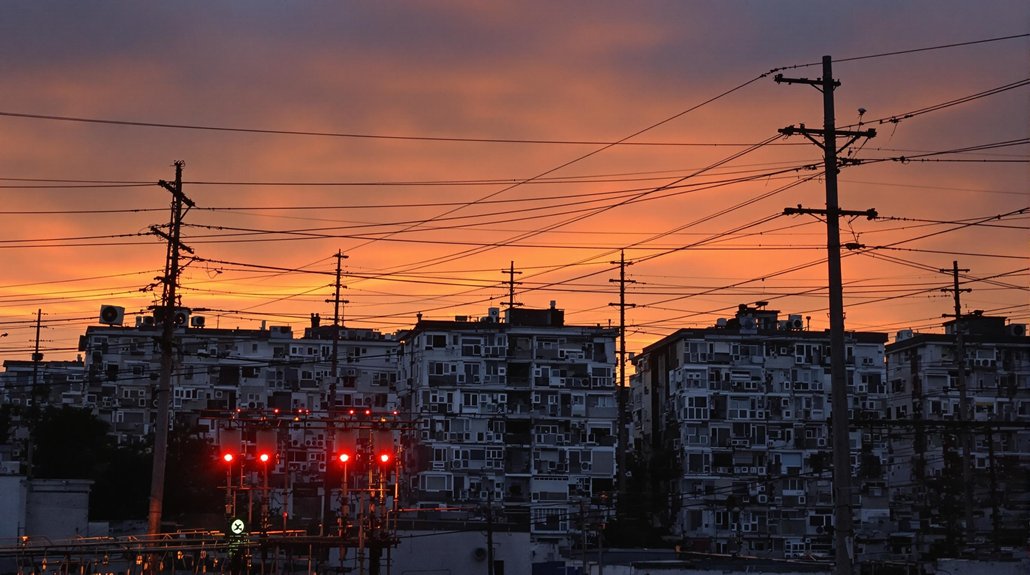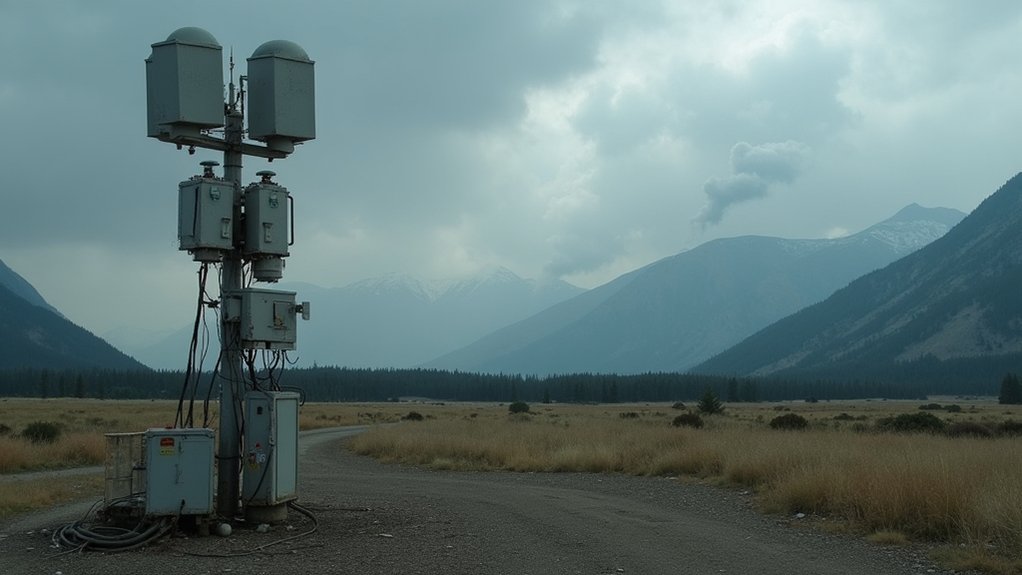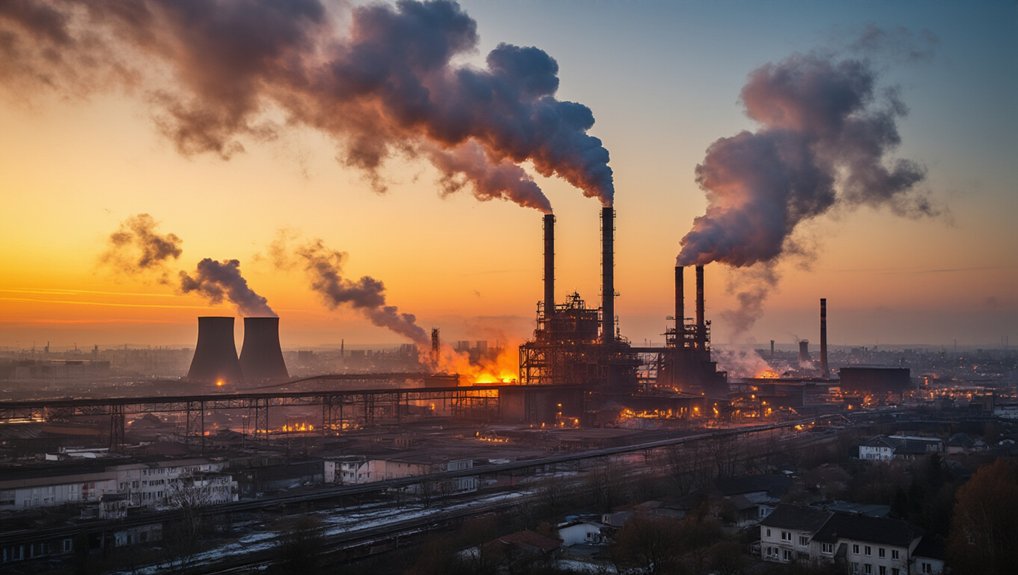Cannabis cultivation devours a staggering 1% of America’s electricity—and it’s heading to 3% by 2035. Indoor grows use 18 times more energy than outdoor operations, rivaling data centers for power hunger. The carbon footprint? Like adding 3.3 million cars to roads. Growers face a nasty combo: massive water needs, air quality concerns, and sky-high energy bills that eat one-third of production costs. Those sustainability efforts? Good luck with federal prohibition in the way.
Countless cannabis plants are sprouting across America, but at what cost? The booming cannabis industry is quietly guzzling resources at an alarming rate. It already devours 1% of the entire U.S. electricity supply – that’s $6 billion worth of power annually. And experts predict this energy hog will triple its appetite to 3% of national electricity consumption by 2035. Yeah, those mellow vibes come with a serious carbon footprint.
Indoor cultivation is the real culprit, using a whopping 18 times more energy than outdoor growing. These operations rival data centers in energy intensity. In Denver alone, cannabis accounts for 4% of the city’s electricity use. Grow lights blazing 24/7, climate control systems cranking – it adds up fast. The geographic limitations of suitable growing conditions force many producers to rely on indoor facilities with significant energy demands. Studies show cannabis cultivation is 70 times more energy intensive than commercial office buildings. The carbon emissions from indoor grows are equivalent to adding 3.3 million cars to our roads annually.
Water usage? Just as concerning. Cannabis plants are thirsty little devils, gulping down 22 liters daily during growing season. That translates to 3 billion liters per square kilometer of greenhouse cultivation. In some regions, illegal “trespass grows” divert 500,000 gallons of water per day. Rivers run dry while plants get high.
The air quality impact doesn’t smell so great either. Cannabis emits biogenic volatile organic compounds (BVOCs) that contribute to ground-level ozone formation. For every 0.9 metric ton of weed produced, about 4.5 kg of VOCs get released into the atmosphere. No wonder neighbors complain about the stench.
Some growers are trying to clean up their act. Energy-efficient lighting, HVAC improvements, solar panels, water conservation techniques – baby steps toward sustainability. But these upgrades require serious cash, and with energy accounting for one-third of production costs, many operations can’t afford to go green.
Federal prohibition complicates everything. Research lags. Regulations vary wildly between states. Data collection remains inconsistent. Meanwhile, the environmental tab keeps growing. The cannabis industry faces a tough balancing act: maintaining profits while addressing its outsized ecological footprint. Something’s gotta give.
